
News
Who is Reb Nachman Breslover from Uman?
ANT KATZ
On the evening of the last day of his life, Rabbi Nachman gave his disciples the key to a chest. “As soon as I am dead,” he told them, “while my body is still lying here on the floor, you are to take all the writings you find the chest and burn them. And be sure to fulfil my request.”
An unusual request indeed.
Who is the Breslov Rebbe?
Nachman of Breslov (Hebrew: נחמן מברסלב), also known as Reb Nachman of Bratslav, Reb Nachman Breslover (Yiddish: רב נחמן ברעסלאווער), Nachman from Uman. He lived from April 4 1772 to October 16 1810 and was the founder of the Breslov Chasidic movement.
According to Wikipedia, Rebbe Nachman, a great-grandson of the Baal Shem Tov, breathed new life into the Chasidic movement by combining the esoteric secrets of Judaism (the Kabbalah) with in-depth Torah scholarship.
 RIGHT: Signature of the Baal Shem Tov
RIGHT: Signature of the Baal Shem Tov
He attracted thousands of followers during his lifetime and his influence continues until today through many Chasidic movements such as the various branches of Breslov Chasidism.
Rebbe Nachman’s religious philosophy revolved around closeness to G-d and speaking to G-d in normal conversation “as you would with a best friend”. The concept of hitbodedut is central to his thinking.
Rebbe Nachman was born in the town of Medzhybizh, Ukraine. His mother, Feiga, was the daughter of Adil (also spelled Udel), daughter of the Baal Shem Tov, founder of Chasidic Judaism. His father Simcha was the son of Rabbi Nachman of Horodenka (Gorodenka), one of the Baal Shem Tov’s disciples, after whom Rebbe Nachman was named. Rebbe Nachman had two brothers, Yechiel Zvi and Yisroel Mes, and a sister, Perel.
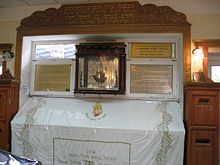 Rebbe Nachman told his disciples that as a small child, he eschewed the pleasures of this world and set his sights on spirituality.
Rebbe Nachman told his disciples that as a small child, he eschewed the pleasures of this world and set his sights on spirituality.
LEFT: The grave of Rebbe Nachman
He paid his melamed (teacher) three extra coins for every page of Talmud that he taught him, beyond the fee that his father was paying the teacher, to encourage the teacher to cover more material. From the age of six, he would go out at night to pray at the grave of his great-grandfather, the Baal Shem Tov, and immerse in the mikveh afterward.
At the age of 13, he married Sashia, daughter of Rabbi Ephraim, and moved to his father-in-law’s house in Ossatin (Staraya Osota today). He acquired his first disciple on his wedding day, a young man named Shimon who was several years older than he was. He continued to teach and attract new followers in the Medvedevka region in the years that followed.
In 1798-1799 he travelled to Israel, where he was received with honour by the Chasidim living in Haifa, Tiberias, and Safed. In Tiberias, his influence brought about a reconciliation between the Lithuanian and Volhynian Chasidim.
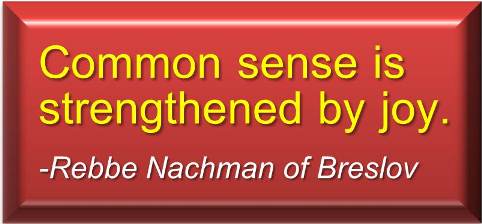 Shortly before Rosh Hashanah in 1800, Rebbe Nachman moved to the town of Zlatopol. The townspeople invited him to have the final word on who would lead the Rosh Hashanah and Yom Kippur prayer services. The man chosen to lead Neilah, the final prayer service of Yom Kippur, did not meet the Rebbe’s approval.
Shortly before Rosh Hashanah in 1800, Rebbe Nachman moved to the town of Zlatopol. The townspeople invited him to have the final word on who would lead the Rosh Hashanah and Yom Kippur prayer services. The man chosen to lead Neilah, the final prayer service of Yom Kippur, did not meet the Rebbe’s approval.
Suddenly the man was struck dumb and forced to step down, to his great embarrassment. After the fast ended, Rebbe Nachman spoke in a lighthearted way about what the man’s true intentions had been, and the man was so incensed that he denounced Rebbe Nachman to Rabbi Aryeh Leib of Shpola, known as the “Shpoler Zeide”, a prominent Chasidic rabbi and early disciple of Rabbi Pinchas of Koretz, who was a leading figure in the first generation of Hasidut.
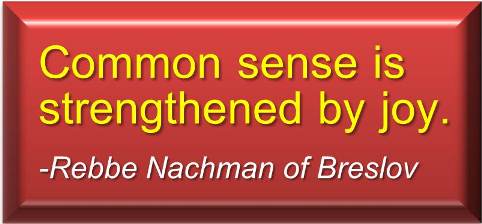 Thus began the Shpoler Zeide’s vehement campaign against Breslov Chasidism. During this time he visited many synagogues, including the Great Synagogue in Dubno in Volhynia (now Rivne region), with the largest one in Ukraine and the graves of relatives in the same city.
Thus began the Shpoler Zeide’s vehement campaign against Breslov Chasidism. During this time he visited many synagogues, including the Great Synagogue in Dubno in Volhynia (now Rivne region), with the largest one in Ukraine and the graves of relatives in the same city.
Move to Breslov, central-west Ukraine
In 1802, Rebbe Nachman moved to the town of Bratslav, Ukraine, also known as “Breslov”. Here he declared: “Today we have planted the name of the Breslover Chasidim. This name will never disappear, because my followers will always be called after the town of Breslov.”
His move to the town of Breslov brought him into contact with Nathan Sternhartz (“Reb Noson”), a 22-year-old Torah scholar in the nearby town of Nemirov, eight miles north of Breslov. Over the next eight years, Reb Noson became his foremost disciple and scribe, recording all of Rebbe Nachman’s formal lessons as well as transcribing the Rebbe’s magnum opus, Likutey Moharan.
After Rebbe Nachman’s death, Reb Noson recorded all the informal conversations he and other disciples had had with the Rebbe, and published all of Rebbe Nachman’s works as well as his own commentaries on them.
Rebbe Nachman and his wife Sashia had six daughters and two sons. Two daughters died in infancy and the two sons (Ya’akov and Shlomo Efraim) both died within a year and a half of their births. Their surviving children were Adil, Sarah, Miriam, and Chayah. Sashia died of tuberculosis on June 11 1807, the eve of Shavuot, and was buried in Zaslov just before the festival began.
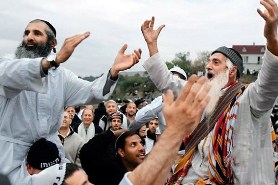
LEFT: Modern-day followers celebrating during their annual “Rosh Hashanah kibbutz” pilgrimage to Ukraine (SEE MORE ON THIS BELOW)
The following month, Rebbe Nachman became engaged to a woman from Brody whose father was the wealthy Joshua Trachtenberg. (In recent years, a descendant of the Trachtenberg family informed Rabbi Leibel Berger, formerly of the Breslov-Uman Vaad https://www.sajr.co.za/images/default-source/People/group/breslov1—uman-map.jpg” alt=”Breslov1 – Uman map” title=”Breslov1 – Uman map” />In May 1810, a fire broke out in Bratslav, destroying Rebbe Nachman’s home. A group of maskilim (Jews belonging to the secular Haskalah https://www.sajr.co.za/images/default-source/places/world/breslov—uman.jpg” alt=”Breslov – Uman” title=”Breslov – Uman” />Therefore, after the Rebbe’s death, Reb Noson instituted an annual pilgrimage to the Rebbe’s gravesite on Rosh Hashanah.
LEFT: Rosh Hashanah kibbutz in Uman.
This annual pilgrimage, called the Rosh Hashanah kibbutz, drew thousands of Chasidim from all over Ukraine, Belarus, Lithuania and even Poland until 1917, when the Bolshevik Revolution forced it to continue clandestinely.
Only a dozen or so Chasidim risked making the annual pilgrimage during the Communist era, as the authorities regularly raided the gathering and often arrested and imprisoned worshippers. Beginning in the mid-1960s, Chasidim who lived outside Russia began to sneak into Uman to pray at Rebbe Nachman’s grave during the year. After the fall of Communism in 1989, the gates were reopened entirely.
STORY CONTINUES BELOW PICTURE
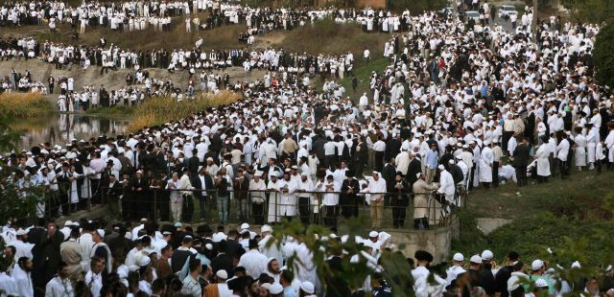 In 2008, approximately 25 000 people from all over the world participated in this annual pilgrimage
In 2008, approximately 25 000 people from all over the world participated in this annual pilgrimage
In April 1810, Rebbe Nachman called two of his closest disciples, Rabbi Aharon of Breslov and Rabbi Naftali of Nemirov, to act as witnesses for an unprecedented vow:
“If someone comes to my grave, gives a coin to charity, and says these ten Psalms https://www.sajr.co.za/images/default-source/default-album/breslov—the-seven-beggars.jpg” alt=”Breslov – the seven beggars” title=”Breslov – the seven beggars” />Sefer HaMidot (The Aleph-Bet Book) (Moghilev, 1821) – a collection of practical advice gleaned from Torah sources, presented as epigrams or maxims and arranged alphabetically by topic.
Another mysterious document that Rebbe Nachman dictated to Reb Noson is the Megillat Setarim (“Hidden Scroll”), which was written in a cryptic combination of Hebrew initials and brief phrases. Prof Zvi Mark has researched and attempted to decipher this document, based on disclosures from prominent members of the Breslov community. His findings have been published in Hebrew and in English translation, along with facsimiles of discrepant manuscript copies.
Auto-destructed works of Rebbe Nachman
Rebbe Nachman also wrote Sefer HaGanuz (“The Hidden Book”) and the Sefer HaNisraf (“The Burned Book”), neither of which are extant. Rebbe Nachman told his disciples that these volumes contained deep mystical insights which few would be able to comprehend.
While he dictated the Sefer HaNisraf to Reb Noson, the latter said that he did not understand it at all; later he said: “What I do remember is that it spoke about the greatness of the mitzvah of hospitality and preparing the bed for a guest”. Rebbe Nachman never showed the Sefer HaGanuz to anyone. In 1808 Rebbe Nachman burned all the copies of the Sefer HaGanuz and the Sefer Ha-nisraf.
Rebbe Nachman first ordered two manuscripts of a book Ha Nisraf to be destroyed in a bargain for his life during a phase of his tuberculosis which preceded his death by two years. He believed that the illness was a “punishment from the upper-world, for writing a book”.
Two years later, from his deathbed, he ordered a chest full of his writings, presumably containing Sefer HaGanuz, to be burnt.
“On the evening of the last day of his life, Rabbi Nachman gave his disciples the key to a chest: “As soon as I am dead,” he told them, “while my body is still lying here on the floor, you are to take all the writings you find the chest and burn them. And be sure to fulfil my request.”
Quotes of Rebbe Nachman
- “It is a great mitzvah to be happy always”
- “If you believe that you can damage, then believe that you can fix”
- “Worldly desires are like sunbeams in a dark room. They seem solid until you try to grasp one”
- “It is very good to pour out your heart to G-d as you would to a true, good friend”
- “You are never given an obstacle you cannot overcome”
- “The essence of wisdom is to realise how far from wisdom you are”
- “All the sages of Israel are in my estimation like a garlic peel”
- “Wherever I go, I’m always going to Israel”
- “All the world is a very narrow bridge, but the main thing is to have no fear at all”
- “There is no such thing as despair at all”





seforim
January 10, 2017 at 3:04 pm
‘Thanks’